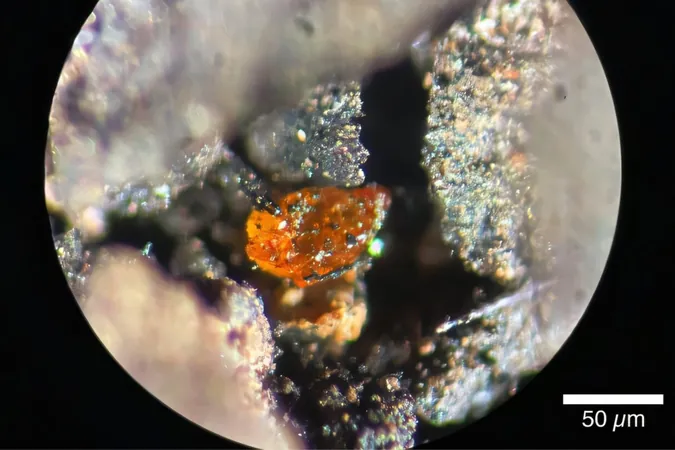
Groundbreaking Discovery: First Amber Unearthed in Antarctica Reveals Secrets of Ancient Rainforests!
2024-11-13
Author: Jessica Wong
Groundbreaking Discovery: First Amber Unearthed in Antarctica Reveals Secrets of Ancient Rainforests!
In a stunning revelation, scientists have uncovered the first-ever fossilized tree resin, known as amber, in Antarctica—an extraordinary find that sheds light on the continent's lush, prehistoric past. Today’s icy landscapes contrast starkly with the swampy forests that thrived in Antarctica around 90 million years ago during the Cretaceous Period.
This remarkable amber was discovered in a sediment core taken from deep beneath the Amundsen Sea Embayment in West Antarctica, specifically at a depth of 3,103 feet (946 meters). The research, published in 'Antarctic Science,' offers a window into the ancient climatic conditions that prevailed on the continent long before it became the frozen desert we know today.
Lead researcher Johann Klages from the Alfred Wegener Institute stated, 'The analyzed amber fragments allow direct insights into environmental conditions that prevailed in West Antarctica 90 million years ago.' This amber complements the team’s earlier findings published in 'Nature' in 2020, where they reconstructed a temperate rainforest that existed between 92 million and 83 million years ago.
The ambers, though small due to the preparation process for microscopy analysis, are believed to contain micro-inclusions of original tree bark. Study co-author Henny Gerschel highlighted the importance of this find, noting that it confirms the existence of resin-producing trees that thrived in a once-swampy environment.
Amber is renowned among paleontologists for its unparalleled ability to preserve organic matter, including pollen, spores, and tiny insects trapped inside. Klages mentioned, 'The fact that we were able to extract amber from these sediments is spectacular. This discovery paves the way for further investigations to identify the tree species that produced the resin.'
Antarctica has yielded numerous fossilized remains, primarily in the form of lithified wood and leaf fossils, but this amber discovery signifies a unique opportunity. The relatively shallow burial of the sediments means that many fossilized remains are in a fresh, well-preserved state—an unusual situation for such ancient materials.
Previously, findings from the Proceedings of the Royal Society B revealed amber fossils containing 66-million-year-old insects, igniting hopes that more amber from Antarctica could provide insights into the fate of its forests and possibly uncover ancient organisms. Klages remarked, 'It was exhilarating to learn that all seven continents once supported climates conducive to resin-producing trees. Our goal now is to probe deeper into the forest ecosystem—exploring evidence of its collapse, or perhaps discovering traces of life preserved within the amber.'
The sediment cores analyzed date back to the Cretaceous, long before dinosaurs like T. rex roamed the Earth. Additionally, the researchers discovered signs of resin flow within the samples, suggesting that these ancient trees were actively responding to injuries perhaps caused by pests or fires, reflecting a lively ecosystem that once existed in what is now the cold, barren continent.
As scientists continue to excavate and analyze these remarkable findings, the anticipation grows. What other secrets lie buried beneath the ice? What fascinating life forms could be found encapsulated in ancient amber? This groundbreaking discovery not only enhances our understanding of prehistoric Antarctica but also beckons us to imagine the vibrant ecosystems that once thrived beneath its frozen surface. Stay tuned as we continue to delve into the mysteries of the past!





 Brasil (PT)
Brasil (PT)
 Canada (EN)
Canada (EN)
 Chile (ES)
Chile (ES)
 España (ES)
España (ES)
 France (FR)
France (FR)
 Hong Kong (EN)
Hong Kong (EN)
 Italia (IT)
Italia (IT)
 日本 (JA)
日本 (JA)
 Magyarország (HU)
Magyarország (HU)
 Norge (NO)
Norge (NO)
 Polska (PL)
Polska (PL)
 Schweiz (DE)
Schweiz (DE)
 Singapore (EN)
Singapore (EN)
 Sverige (SV)
Sverige (SV)
 Suomi (FI)
Suomi (FI)
 Türkiye (TR)
Türkiye (TR)